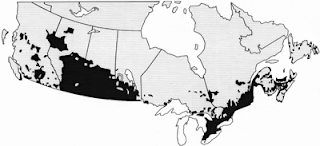Myth: Farm animals routinely raised on factory farms are confined in crowded, unventilated cages and sheds.
 |
| A hog barn with proper ventilation |
Myth: A vegetarian diet is healthier than a diet that includes meat, poultry, milk, and eggs.
Fact: Government heath agencies have said that a healthy diet should contain meat, milk, and eggs. Health benefits can be derived by non-vegetarians who follow a strict diet that is low in fat, sodium, sugar and alcohol. Poorly-planned vegetarian diets can be just as unhealthy as poorly-planned non-vegetarian diets. The key to a healthy diet is moderation. A lot of people take milk out of their diet believing it is a fattening substance; however, milk is one of the best sources of calcium in the diet. Calcium is important in warding off colon cancer and osteoporosis. Beef is also a huge source of different vitamins and minerals for a healthy diet, you can check out my "The Truth About Beef" blog to learn all about the different benefits.
Myth: Farm animals in confinement are prone to disease, forcing farmers to routinely use antibiotics, hormones and drugs and to keep them alive. This jeopardizes animal and human health.
Fact: Animal scientists, veterinarians and on-farm experience show animals kept in housing are generally healthier because they are protected. Farm animals do sometimes get sick. To prevent illness and to ensure that an animal remains healthy all of its life, farmers will take preventive measures, like using animal health products. These products include animal drugs and vaccines, in addition to vitamins, minerals and other nutrients the animal needs in its diet. All of the products used on animals have been regulated and tested by government agencies to ensure the safety of the animal and its meat.
 |
| Distribution of cropland in Canada (blackened area) Around 5% crop production and 6% grazing |
Fact: Canadians need to both animals and plants to manage the nation's natural resources in the best way possible and feed its people. A majority of the land in Canada can't be used for growing crops and can only be used for grazing. The land would be of no use as a food resource if it were not for grazing livestock like cattle, goats and sheep.
These are just a few of the many agricultural myth that circle the nation. Before you agree with something make sure you know your facts and don't jump to conclusions.
Hope everyone's having a wonderful weekend, its been pretty rainy here in Ponoka. Anyways, I better get back to studying Bio for my diploma! Learning about all sort of interesting things like the endocrine system, nervous system, reproductive system, cell division, molecular genetics, Mendelian genetics, and population genetics and interactions.
xo
~Carling


No comments:
Post a Comment